
Bloodwych is a dungeon role-playing video game, a dungeon crawler, developed for the Amiga, Atari ST, MS-DOS, Amstrad CPC, Commodore 64, and ZX Spectrum. The box artwork is Chris Achilleos. The player is a champion of Trazere who, after recruiting up to three fellow champions, travels through dungeons and mazes fighting creatures along the way to find and destroy the evil Zendick, and banish the Lord of Entropy.
Andrew Nicholas Oliver and Philip Edward Oliver, together known as the Oliver Twins, are British twin brothers and video game designers.
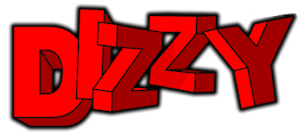
Dizzy is a series of video games, created by the Oliver Twins and published by Codemasters. It was one of the most successful British video game franchises of the late 1980s and early 1990s. Originally created for the ZX Spectrum and Amstrad CPC, the series appeared on multiple home computer and video game console formats, with over a dozen games being published between 1987 and 1992.
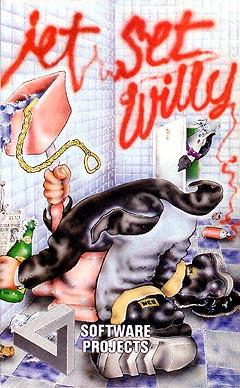
Jet Set Willy is a platform video game written by Matthew Smith for the ZX Spectrum home computer. It was published in 1984 by Software Projects and ported to most home computers of the time.

Wonder Boy in Monster Land, known by its original arcade release as Wonder Boy: Monster Land, is a platform video game developed by Westone Bit Entertainment and released by Sega in Japanese arcades in 1987 and for the Master System in 1988, with a number of other home computer and console ports following. The game is the sequel to the 1986 game Wonder Boy and takes place eleven years after the events in the previous game. After enjoying over a decade of peace on Wonder Land following the defeat of the evil King by Tom-Tom, later bestowed the title "Wonder Boy", a fire-breathing dragon called the MEKA dragon appeared; he and his minions conquered Wonder Land, turning it into "Monster Land". The people, helpless due to their lack of fighting skill, call for Wonder Boy, now a teenager, to destroy the monsters and defeat the MEKA dragon. Players control Wonder Boy through twelve linear levels as he makes his way through Monster Land to find and defeat the MEKA dragon. Players earn gold by defeating enemies and buy weapons, armor, footwear, magic, and other items to help along the way.
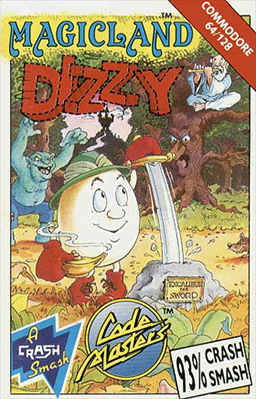
Magicland Dizzy is a platform adventure game published in Europe in 1990 by Codemasters for the ZX Spectrum, Commodore 64 and Amiga platforms. By 1992 there were also MS-DOS, Atari ST and Amstrad CPC versions available. It is the sixth game in the Dizzy series, and the fourth adventure-based Dizzy title. The story, set in a fantasy world called Magicland, follows on from the events of Fantasy World Dizzy, the previous adventure title. In Magicland Dizzy the player controls Dizzy, an egg-shaped character, who is trying to save six of his friends who have been placed under spells by the Evil Wizard Zaks.
Magic Knight is a computer game franchise created by freelance programmer David Jones originally for the 1985 game Finders Keepers on the Mastertronic budget label. Finders Keepers is a flip-screen platform game released on the ZX Spectrum, Amstrad CPC, MSX and Commodore 64. The game spawned three additional sequels on the Mastertronic Added Dimension budget label: Spellbound (1985), Knight Tyme (1986) and Stormbringer (1987). The three sequels are far less action-orientated, being effectively graphic adventure games using a basic menu system ("Windimation") for Magic Knight to interact with characters and items instead of typed commands.
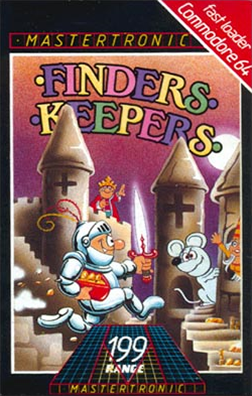
Finders Keepers is a video game written by David Jones and the first game in the Magic Knight series. It was published on the Mastertronic label for the ZX Spectrum, Amstrad CPC, MSX, Commodore 64, and Commodore 16 in 1985. Published in the United Kingdom at the budget price of £1.99. Finders Keepers is a platform game with some maze sections.
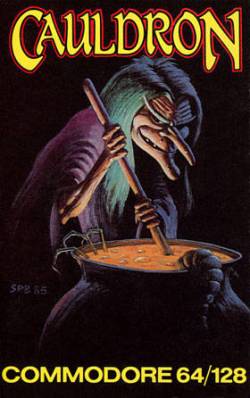
Cauldron is a video game developed and published by British developer Palace Software in 1985 for the ZX Spectrum, Commodore 64, and Amstrad CPC home computers. It contains both platform game and horizontally scrolling shooter sections. Players control a witch who aims to become the "Witch Queen" by defeating an enemy called the "Pumpking".

Twin Kingdom Valley is a text adventure game with animated pictures for the BBC Micro, Acorn Electron, Commodore 64, Commodore 16, and ZX Spectrum. It was released in 1983 by Bug-Byte.

Hunchback is a video game developed by Century Electronics and published in arcades in 1983. The game is loosely based on the 1831 Victor Hugo novel The Hunchback of Notre-Dame and the player controls Quasimodo. Set on top of a castle wall, the player must guide the Hunchback from left to right while avoiding obstacles on a series of non-scrolling screens. The goal of each screen is to ring the church bell at the far right.

Black Lamp is a platform game, originally published by Firebird Software for the Amiga, Atari ST, Commodore 64 and ZX Spectrum computers in 1988, and later published by Atari Corporation for the Atari 8-bit computers in 1989.
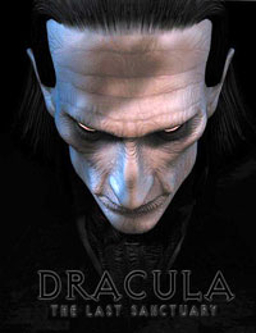
Dracula 2: The Last Sanctuary is a 2000 graphic adventure video game developed by Wanadoo Edition and jointly published by Index+, France Telecom Multimedia, Canal+ Multimedia and Cryo Interactive. Originally released for Windows and Mac OS, it was ported to the PlayStation in 2002. A modified version developed and published by Microïds was released for iOS and OS X in 2012 and for Android in 2013. In 2014, the remade version was made available on Steam. There were dubbing mutations in French, English, Spanish, German, Italian, Hungarian and Czech.

Barbarian II: The Dungeon of Drax is a video game first published in 1988 for various home computers. It was released as Axe of Rage in North America. The game is the sequel to Barbarian: The Ultimate Warrior, which was published in 1987. In Barbarian II, the player controls a princess or barbarian character, exploring the game world to locate and defeat an evil wizard. The game's plot is an extension of its predecessor, although the gameplay is different. While the first game offers two players the opportunity for virtual head-to-head combat, the second is a single-player beat 'em up with fewer fighting moves. It uses a flip-screen style instead of scrolling.
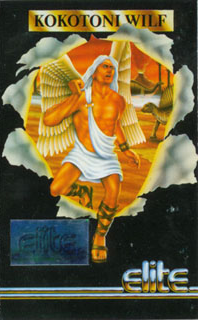
Kokotoni Wilf is an action-adventure game released by Elite Systems in 1984 for the Amstrad CPC, Commodore 64, and ZX Spectrum home computers. The game was inspired by Jet Set Willy.

Football Manager is the first game in the Football Manager series.
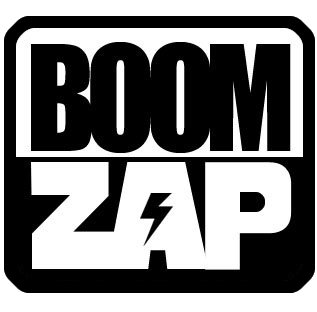
Boomzap Entertainment is a casual games developer registered in Singapore with a virtual office environment. It was formed in 2005 and has released 50 games to date that are ported on various platforms. Boomzap has developed for Microsoft Windows, Mac OS X, Nintendo DS, Wii, iOS, and Android. Its games are available on games portals such as Big Fish Games, Yahoo!, WildTangent, GameHouse, Google Play, Amazon, iTunes, Steam and others.

Thanatos is an action game developed and published by Durell Software in 1986 for the ZX Spectrum, Commodore 64 and Amstrad CPC.

Zenonia 2: The Lost Memories is the sequel to Zenonia, an action role-playing game developed, created, and published by Gamevil for the iOS and Android. It was released on the App Store on March 29, 2010, on the Android Market on December 24, 2010, and on the Amazon Appstore in the first quarter of 2011.

Rastan Saga, known as Rastan in North America, is a side-scrolling hack and slash arcade video game released by Taito in 1987. It was a critical and commercial success and was ported to home platforms. On May 2, 2024, the arcade version of the game got ported as part of the Arcade Archives series.




















